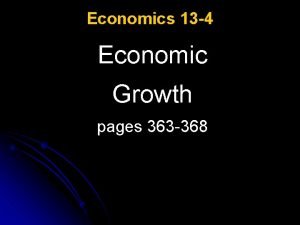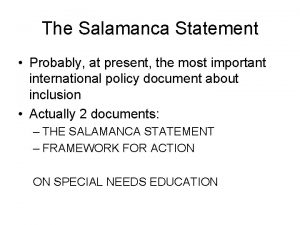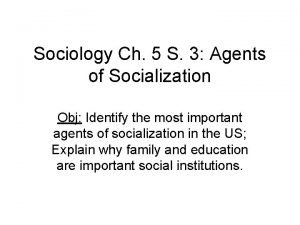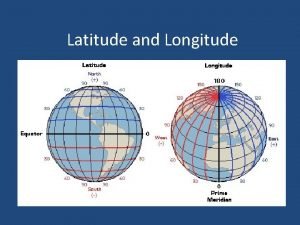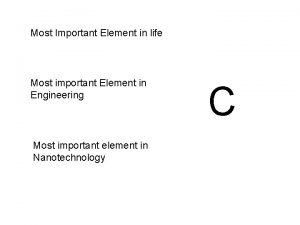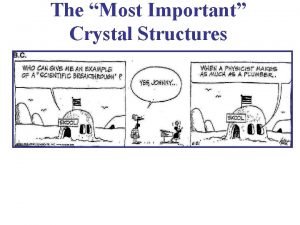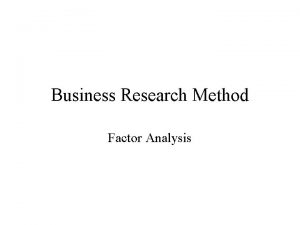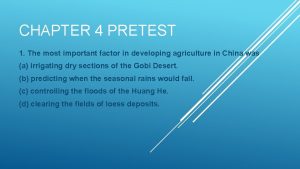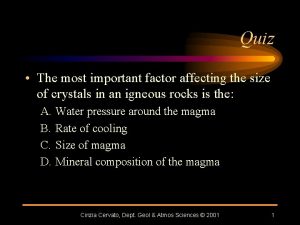ENERGY Energy v Most important factor for economic

















- Slides: 17

ENERGY

Energy v Most important factor for economic growth. v The energy consumption in India is the fourth biggest after China, USA and Russia. v India has one of the world's fastest growing energy markets and is expected to be the second-largest contributor to the increase in global energy demand by 2035, accounting for 18% of the rise in global energy consumption. v India's growing energy demands and limited domestic fossil fuel reserves, the country has ambitious plans to expand its renewable and nuclear power industries

Energy Consumption

Source of Energy Two sources of energy v. Commercial Energy It consist of coal, petroleum and electricity. v. Non Commercial Energy Also known as traditional source of energyconsist of firewood, vegatable waste and dried dung.

Commercial source of Energy v Coal and Lignite: • The total estimate source of coal in India is around 148, 790 million tonnes. • The total reserves about 3. 300 million tonnes its mostly found in Tamilnadu. • India has the world's 4 th largest coal reserves. In India, coal is the bulk of primary energy contributor with 54. 5% share out of the total 595 Mtoe in the year 2013. India is the third top coal producer in 2013 with 7. 6% production share of coal (including lignite) in the world.

Oil and Gas • The financial year 2012 -13, the production of crude oil is 37. 86 million tons and 40, 679 million standard cubic meters (nearly 26. 85 million tons) natural gas. • The net import of crude oil & petroleum products is 146. 70 million tons worth of Rs 5611. 40 billions. This includes 9. 534 million tons of LNG imports worth of Rs. 282. 15 billions.

Electric power • There are hydro and thermal power • Thermal power is generated by the use of oil and gas. • India is endowed with economically exploitable and viable hydro potential assessed to be about 84, 000 MW at 60% capacity factor. with an aggregate installed capacity of 94, 000 MW • The hydro-electric potential of India ranks 5 th in terms of exploitable hydro-potential on global scenario. • During the year 2013, the total hydro electricity generation in India is 132 billion KWh which works out to 25, 000 MW at 60% capacity factor.

Non Commercial Energy v. Fuel wood: It is essential for cooking and it is extensively used in villages and towns. v. Agricultural waste: Agrictural waste such as straw are presently use as feed and fodder, roofing material, organic matter for compost etc. • Estimates consumption is about 41 million tonnes in the year(1975 -76), now it about 65 million tonnes

Cont. . v. Animal Drug • It is extensively used as a fuel in rural area. • Total estimate production of 324 million tonnes, about 73 billion tonnes are estimated to be burned for energy purpose every year.

Trends in the consumption of commercial energy

Energy Crisis v. The energy crisis was basically an oil crisis; it is not just a national issue affecting India alone but it was a global problem. v. In India , however, energy crisis has certain peculiar features. a. India's energy problem is not of demand supply imbalance in oil only and also in commercial fuels b. At the same time , coal industry which was expected to meet the energy crisis in India by stepping up coal production substantially.

Cont… c. The demand supply gap for electricity too has been widening while the demand for power has been growing rapidly d. Energy in rural India: it effect the millions of rural poor who have now to spend anything upto 100 man days

Measures to Tackle Energy Crisis in India 1. Oil Shortage: • Reserves of mineral oil in India is only 0. 3% of world’s known oil reserves. Oil shortage adversely effect the transport sector in the economy. Again rising oil prices has led to rising general prices in India. 2. control over the consumption of POL: • Government tried to control the use of protroleum • Consumption is increased from 75 million to 138. 2 million. 3. Substitution of oil by coal: According to an official estimation if the industries including power houses which could to coal without major modification in their plant would require 10 million tonnes of coal a year it helps to save about 4 million tonnes of furnace oil.

Cont. . 4. Expansion of electric power: ministry of power try to increase the power production through, revial of the Dabhol power project, NTPC and few SEB are commissioning power plants using supercritical techonology, government encouraging the use of hydrel and wind energy. 5. Conservation of energy: Refers to reducing energy consumption through using less of an energy service.

Cont. … 6. Renewable sources of energy: Government strategy for promotion of renewable energy consist of: • Providing budgetary support • Extending institutional finance from Indian renewable energy development agency. • Promoting private investment in new and renewable energy

Renewable energy share in 2020

THANK YOU t
 From most important to least important in writing
From most important to least important in writing Inverted pyramid in news writing
Inverted pyramid in news writing Least important to most important
Least important to most important Economic important of bird
Economic important of bird Economic importance of pine
Economic importance of pine Importance of economic growth
Importance of economic growth Economic importance of animals
Economic importance of animals Economic growth vs economic development
Economic growth vs economic development Economic development vs economic growth
Economic development vs economic growth Economics unit 1 lesson 2 difficult choices
Economics unit 1 lesson 2 difficult choices In an energy pyramid where is the most energy
In an energy pyramid where is the most energy 2 most important commandments
2 most important commandments Salamanca declaration
Salamanca declaration What is meant by resocialization
What is meant by resocialization What is resocialization
What is resocialization Most important part of the body
Most important part of the body Horizontal lines that separated east from west
Horizontal lines that separated east from west 2 most important commandments
2 most important commandments





